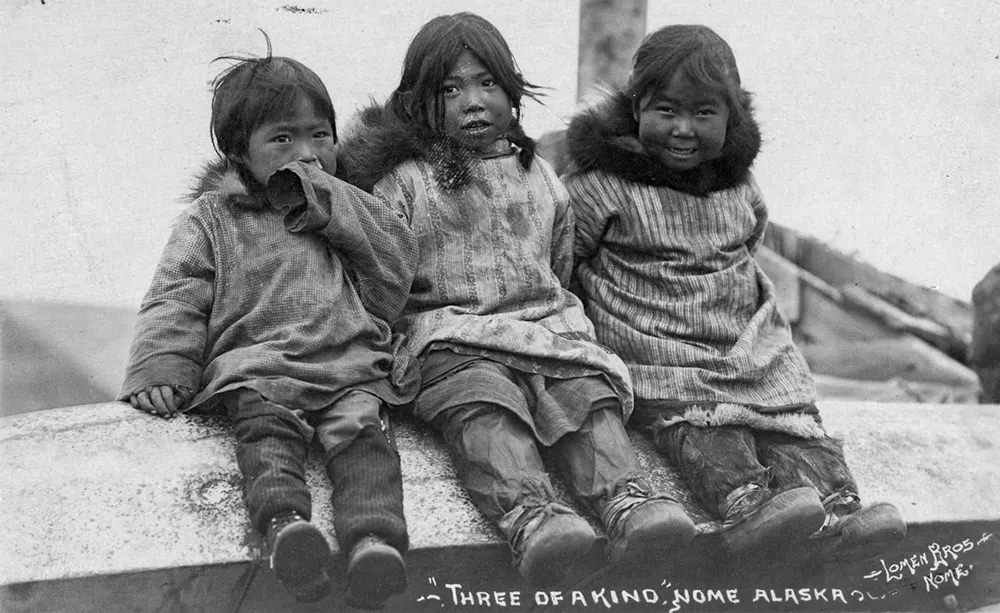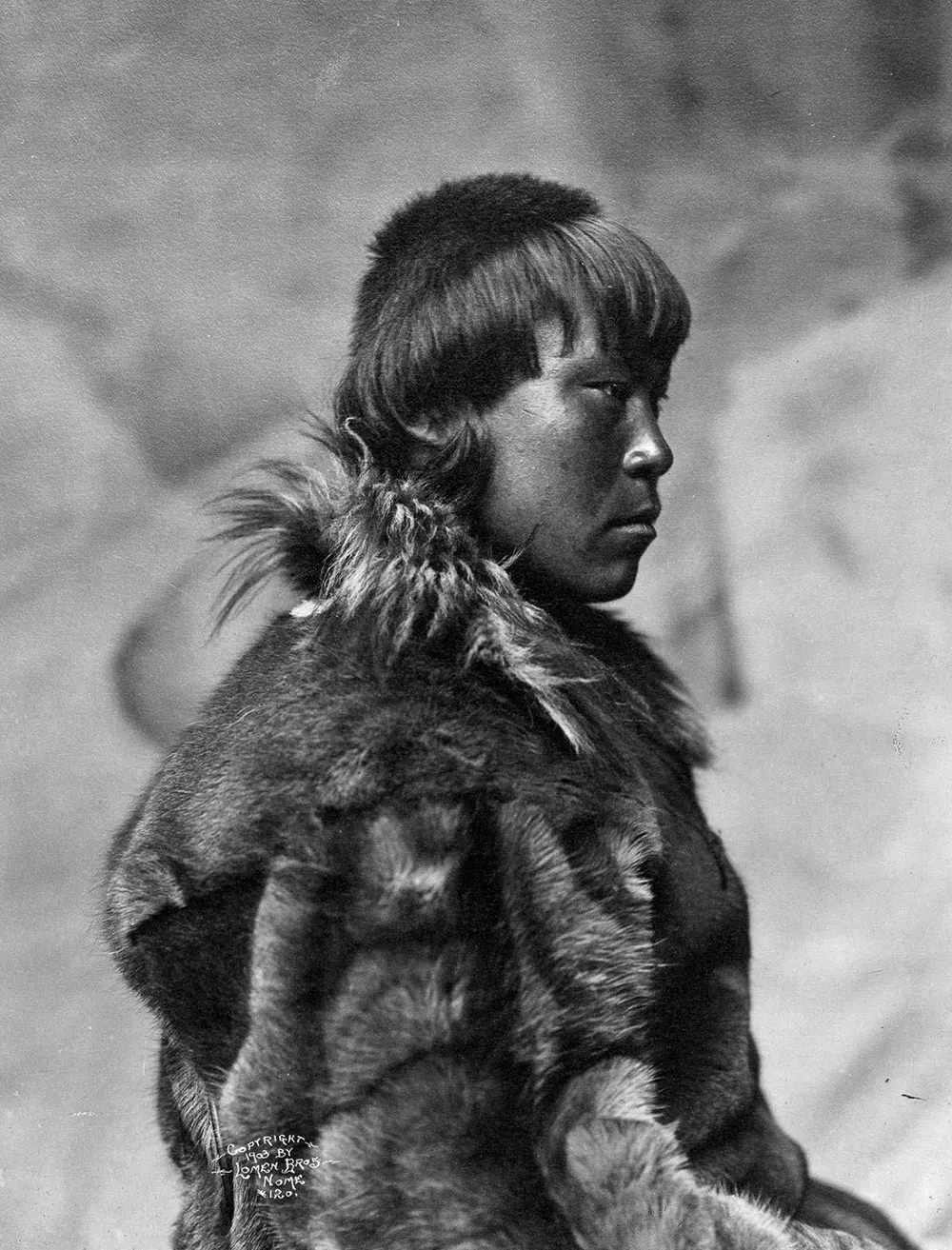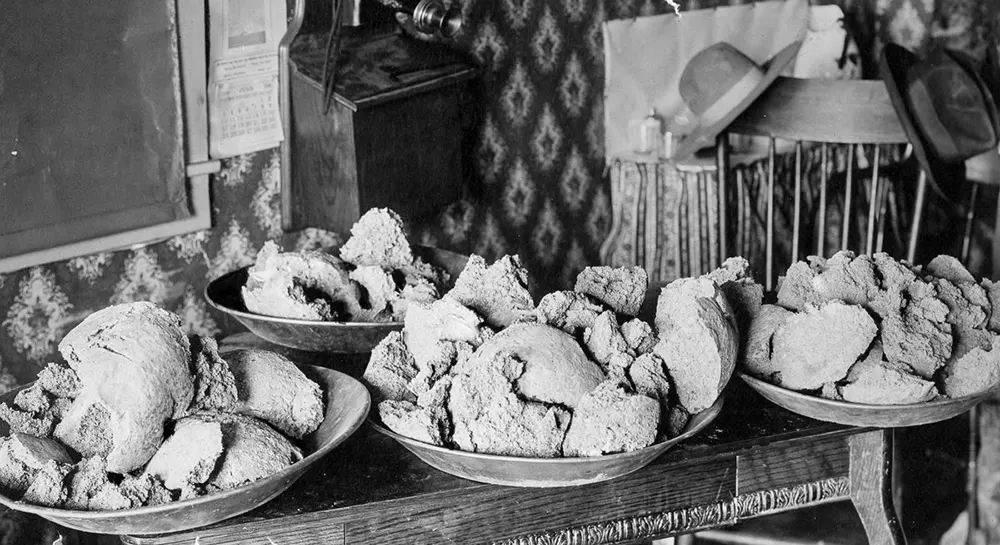The Lomen family took these photographs of Yupik Eskimo and prospectors during Alaska’s Gold Rush from 1900 to 1930. Eskimo refers to the members of the arctic Alaskan population, including the Inupiaq, Yupik, and Alutiiq. It is now believed that the word “Eskimo” derives from an Ojibwa word that means “to net snowshoes.” The term “Inuit” is used in Canada instead of “Eskimo.” Still, most Alaskans refer to themselves as “Eskimo,” since “Inuit” applies only to the Inupiat of northern Alaska, the Inuit of Canada, and the Kalaallit of Greenland. It is not a word in the Yupik languages of Alaska and Siberia. Today, Eskimo is considered offensive and derogatory in Canada and Greenland, and Inuit have taken its place. In Canada’s Central Arctic, the preferred term is Inuinnait, while in the eastern Canadian Arctic, it is Inuit. There are several local names for the language, including Inuktitut.
Numerous studies indicate that the Eskimo people have lived in the Bering Strait region for 4,000 to 6,000 years. Inuit life was totally adapted to a harsh environment characterized by very cold temperatures, snow, and ice, where vegetable foods were scarce, trees were scarce, and caribou, seals, walruses, whales, seabirds, and fish were significant foods. The clothing of the Inuit was made from caribou furs, which protected them from the extreme cold. The Inuit hunt seals with harpoons on the ice or in skin-covered kayaks. A larger boat known as an umiak (umiaq or umiat) was used to hunt whales. Most Inuit families hunted land animals in the summer with bows and arrows, including caribou. The main mode of transportation on land was the dog sled.
The nuclear family is the most fundamental unit in their society and economy, and their belief system is animistic. Generally, Inuit wintered in snowblock houses (iglus or igluvigaqs, depending on dialect), or semi-subterranean homes built of stone or sod atop a wooden or whalebone framework. Many Inuit lived in tents made of animal skins during the summer.
Lomens originally came from Minnesota and moved to Nome in 1903. Several years later, the family-owned a clothing store, pharmacy, stationery store, meatpacking facility, a shipping company, a local photography studio, and the Lomen Reindeer Corporation. The Lomens regularly purchased several other photographers’ negatives for reissue under the Lomen Brothers Co. studio name. The photographs featured a range of subjects related to Nome and the surrounding areas, including mining, business, dogsled teams, ships and boats, aviation, gold prospectors, and indigenous communities in Alaska and Canada. Fire destroyed their studio in September 1934, along with 25,000-30,000 negatives and 50,000 commercial prints. About 3,000 negatives were salvaged. In the 1920s and 1930s, the Lomen family purchased reindeer herds and constructed a massive structure of slaughterhouses and processing facilities, still having success with crossbreeding caribou and reindeer. Eventually, they dominated the reindeer meat and skin export market for the United States, making Inuit small farmers virtually uncompetitive. Lomen’s meatpacking business was forced to close in 1937 after Congress mandated that the Bureau of Indian Affairs administer all Alaskan reindeer herds.




























